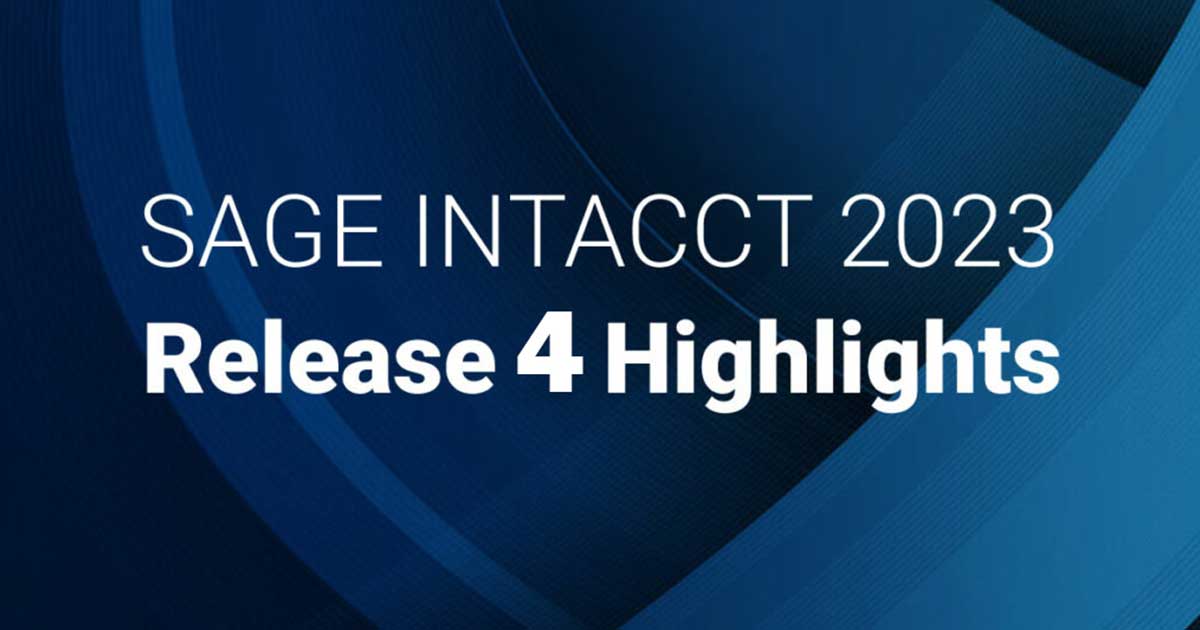
The Biotech market has seen an unprecedented influx of funding and IPOs have also reached record levels in 2020 and 2021. But things have started to change: in the second half of 2021, Biotech IPOs significantly slowed down, and as the Fed tees up rate increases for March, the financing environment in 2022 is likely to look different than it did a year or two ago.
As the go-to-market lead for Biotech and Life Sciences for the Sage Intacct, Juergen Utess recently had the chance to sit down with Richard Murphey from Bay Bridge Bio to have a closer look at the market and what the changing sentiment means for Biotech companies and their funding strategy this year. Richard has about a decade of experience working at venture-backed startups, investment banking, and at Google – always with a focus on the biotech and life sciences space. In 2017, he started Bay Bridge Bio, a research firm focused on private biotech companies and investments.
What follows is a slightly edited version of the interview, with small adjustments for better readability.
How was the IPO market in 2021, and what happened in that second half?
Richard: I characterize the 2021 IPO market really as a tale of two halves. The first half of the year saw a record level of IPO issuance. Through August of 2021, there was $12 billion raised in US IPOs of VC backed biopharma companies, which was a record. And it was double the $6 billion raised in that same period in 2020. So 2020 was a huge IPO year and then 2021, the first half doubled that. But the IPO market in the second half was a different story. So from August to December, only about a billion and a half was raised in IPOs of venture-backed companies.
And that’s down from $4.4 billion in 2020. So you saw a doubling of the IPO volume in 2021 compared to 2020, a doubling of that volume from January to August. And then it was down more than half from August to December. So it really was a pretty dramatic reversal in the IPO market throughout 2021. So levels of IPO issuance were still high, compared to any years other than 2020, but the pace and the momentum of the decline was pretty stark.
What was the impact of the poor performance, especially on the IPO market itself?
Richard: The IPO market took a hit in large part because the performance of biotech stocks was poor in 2021. And especially the cohort of companies that went public in the first half of the year, that was a pretty poor performing cohort of IPOs. The stock price of the average company that went public in 2021, was down 20% from IPO price six months after the IPO. So, the people who invested in that IPO before or around the period where the lockouts might expire, they were down 20% and that’s across $12 billion of investment. So those investors that got hit pretty hard by the poor performance of those IPOs, and they left the market in pretty large force.
And what we saw in the first half of the year was that, there was a huge influx of investors who were not as frequent participants in the IPO market. There are probably 20 or so institutional investors who are the bedrock of the biotech IPO market. And they do increase and decrease their activity quarter over quarter, but after COVID, there was a huge influx of investors who didn’t have as much experience investing in biotech IPOs. They put a ton of money into the market, in the first half of 2021. And then after the poor performance of those IPOs, they left in pretty dramatic fashion in the second half of the year.
Do you think the market will stabilize; will it recover – will it be more difficult to IPO this year?
Richard: It seems like based on the performance of the public biotech markets this year, it hasn’t been a great start. The XBI index was down 17% in the second half of 2021, which is down 36% from its peak on February 8th. And I think this year it’s down, something like 20% year to date, which does not bode well for the IPO market unfortunately.
In terms of the ability of the market to recover, a lot of the recovery in the IPO market during COVID was due to obviously increased liquidity and the Feds’ aggressive stimulus. So, if something like that happens, or if there’s sort of positive catalyst for the sector, there is potential for recovery.
However, there have been reports especially in Q4 of some redemptions at biotech investment funds where the investors in those funds have wanted some of their money back and even some rumors of funds shutting down. If there has been a more significant reduction in the amount of capital available within these funds, then that could be a structural decline in the IPO market.
In terms of what we can expect in 2022, I kind of think of it as there’s two sides of the story: there’s the supply side of IPO investments that come from funds, and then the demand side of investments from IPO investors. The supply side in the second half of 2021 took a significant hit. Unless the market has a dramatic recovery, I think we can expect the amount of dollars invested in IPOs to stay low.
The demand side is also going to be somewhat problematic. Because there’s a lot of companies that raised money recently, and they were previously planning on accessing the public markets.
While we saw a dramatic reversal in IPO volume in 2021, it was still a record year for venture capital funding of companies with $36 billion invested into bio pharma startups – which is up, from I believe, $24 billion in 2020. And that included a record $13.3 billion in Series B investments. Series B is, in these days, the last or second to last private round.
A lot of those companies were expecting to go public after raising that round. And if you calculate the demand for IPO capital, based on the amount of companies who raised late stage financing, there was about $29 billion in demand for IPO investment in 2021. The supply was about $13.6 billion. That will increase to about $37 billion in demand for IPO investment in 2022. And the supply could be down to five billion or so.
So there’s this huge supply demand mismatch, and there’s going to be a lot of companies competing for scarce IPO dollars, and that’s going to have important consequences for the funding strategies for these companies.
What does it mean for a company that might have been trying to go public later this year or maybe early next year?
Richard: Companies that were relying on an IPO to a fairly large extent in their funding plans, I think there will need to be contingency plans developed. Say you’ve raised a Series A round, you’ve raised maybe a Series B round, and you’re thinking about what to do next with your funding – I think a lot of those companies are going to have to look to their current syndicate to support them because another consequence of the poor performing IPO market, is that a lot of crossover investors are suffering.
These are investors who do the last private round and then also support the company in their IPO. A lot of them have taken losses in addition to that, because the IPO market isn’t really there, the whole strategy of doing these pre-IPO rounds and flipping them to your IPO is not really as robust as it used to be. So, there could be some weakness in the mid- to late-stage venture capital funding landscape because of that.
But fortunately, there is a record number of capital and dry powder in the venture capital, biotech venture capital world. For companies that are funded by strong syndicates, their existing syndicates will probably be able to support them through a longer stay in the private markets than they expected. Of course, that depends on the strength of a company’s individual syndicate and valuations may take a hit. Some companies may get funded while others don’t.
But those companies will probably look to rely a little bit more on their existing syndicate to fund them. Another way to fund these is acquisitions. We’ve seen not as many as some might have hoped, but there are a lot of collaborative R&D agreements between pharma and start-up companies that could be a source of funding.
But I think for a lot of companies extending the cash runway and reducing the burn rate could potentially be another viable option to keep going and creating value in the face of a declining IPO in mid to late-stage venture markets.
How much money does a company typically raise right now in those early rounds, and do you think that can sustain them through a year or two of uncertainty in the market?
Richard: If you assume the average company that does go public, does so after a Series B. They’ve raised a $100 million – $200 million in private capital to get to that point. Now burn rates have also increased, so that money may not last as long as it might have in the past. But a lot of these companies have money and the options to refocus some of their spending to keep them going. So, for companies that have multiple assets in development, or a lot of investment in a platform, there are opportunities with a little bit more focused R&D plan to still create a lot of value within the company. But to do so in a way that extends the runway and gives the company as much optionality as possible.
Are there any other funding strategies companies should look at right now?
Richard: I think that the companies should always keep an eye on the IPO market. We did see that there were three or four IPOs this year already, I think they raised about $450 million in total, and two of them were up-sized. One of them was downsized. And that’s about in line with last year. However, the IPO market didn’t really pick up until February last year, so we’ll still have to wait and see if that pace continues. But I think that most companies would be prudent to strongly consider their funding options, including, like I said, raising additional round from their current syndicate, talking to other external investors who might be able to support a Series B or C round. Doing partnerships with larger pharma companies and extending their runway.
And I think that there will still be a fairly robust, mid- to late-stage venture market, even though the crossover investors go away. There were a lot of venture funds that used to specialize in, Series B and C investing. They’ve been pushed out of the market the last few years, because you’ve had a lot of crossover and hedge fund investors come in aggressively into that space. A lot of those funds that were sort of pushed into Series A or company formation space may be happy to deploy capital towards mid- to late-state venture rounds for high quality companies.
The makeup of potential investor list that companies are talking to these rounds may change a little bit, but I think that they may find there still are some willing investors who have a lot of capital on their balance sheets. Although the structure and the term around those deals may look a little bit different, the companies would do well to explore those funding options and partners as well.
Conclusion:
It sounds like 2022 might be a difficult year, but not all doom and gloom in Biotech. Either way, founders and finance officers are well advised to have a look at how their spending aligns with that changing funding environment.
And from the financial side, pulling in money is of course one thing, but making the money go further is another. So you could put in the modern financial management system that will give you detailed understanding of your profit and loss. It will help you understand your program spending, prioritize accordingly, shut down things that aren’t going so well, and that will save you time and money and make your funding last a lot longer.
This post was originally published on Sage.com


